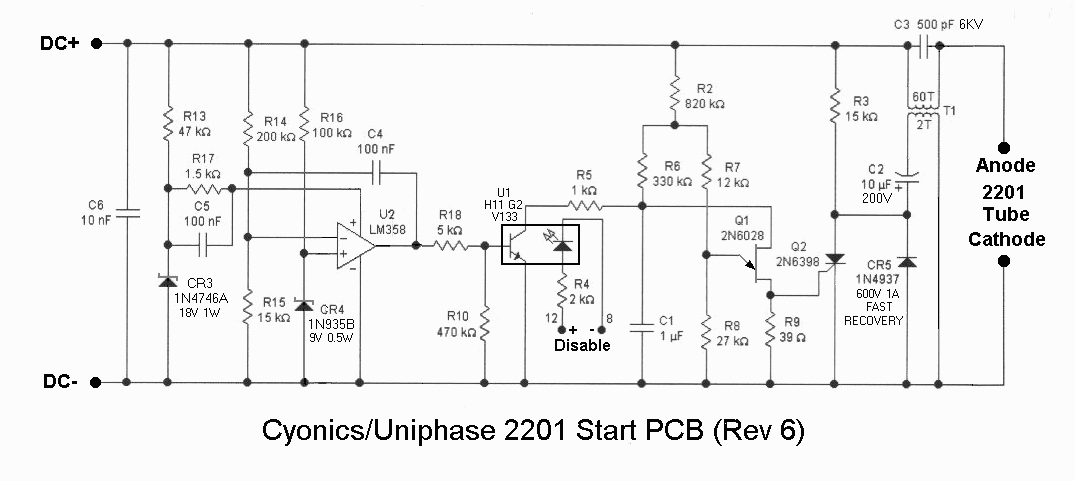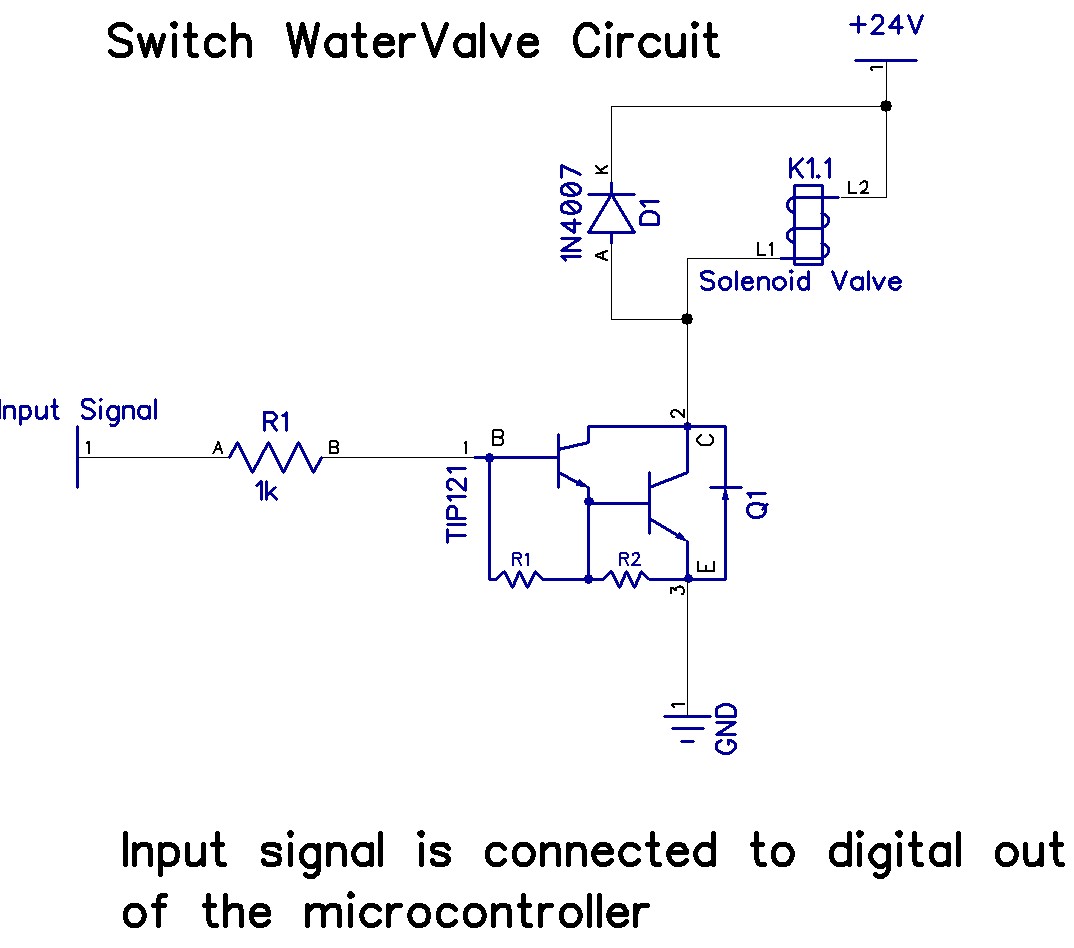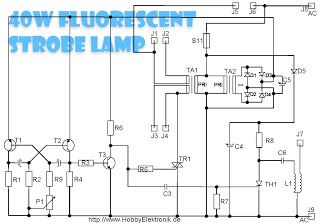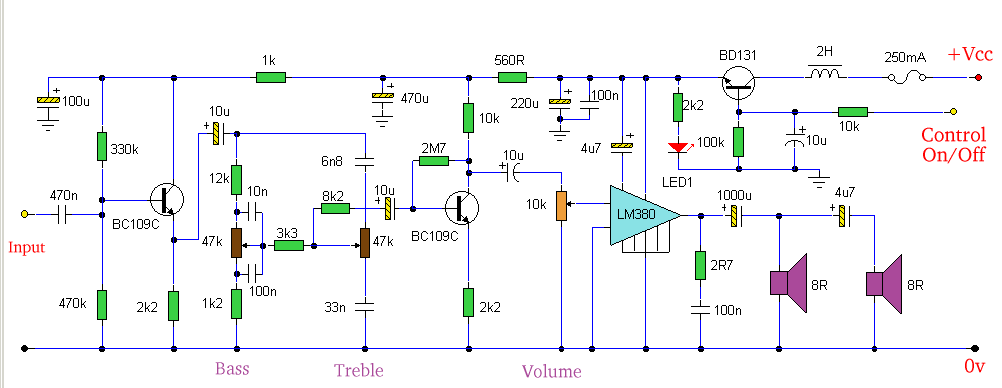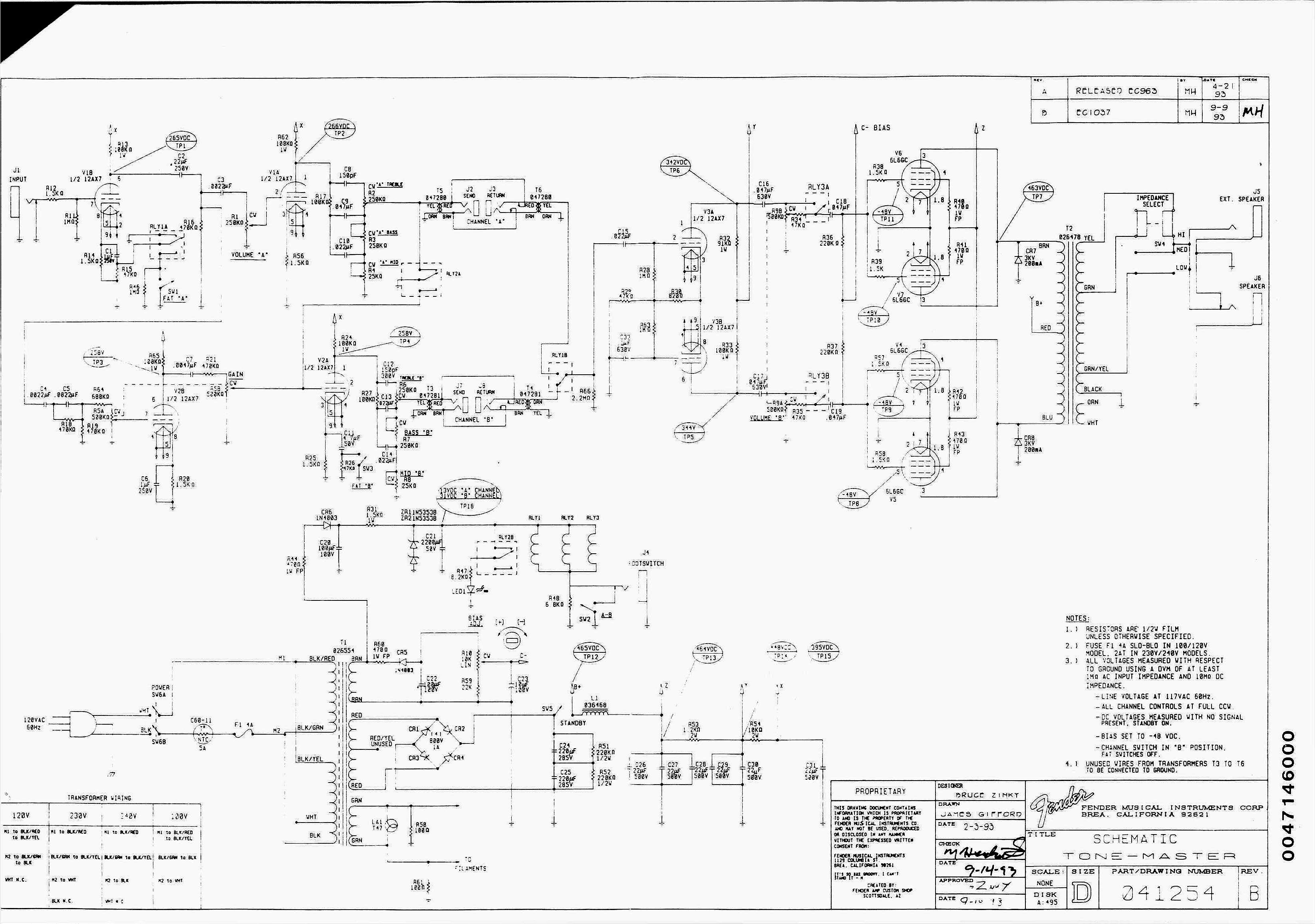
FM SCHEMATICS
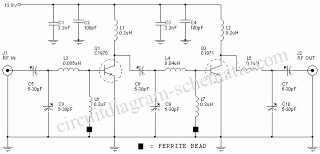
An FM amplifier is utilized to amplify signals from an exciter in broadcast radio stations. This RF FM amplifier employs solid-state materials with a minimum gain of 9 dB. The input requirement for the FM amplifier is between 5 to 10 watts, while the power output is approximately 100 watts. This amplifier can facilitate the creation of a personal radio station, enable music transmission throughout a residence, or establish a wireless link between devices such as an iPod and a car receiver. The BA1404 Hi-Fi Stereo transmitter allows for the transmission of MP3 music from various audio sources, including iPods, computers, discmans, walkmans, and TV/SAT receivers. The design of this FM transmitter is the result of extensive testing and refinement, aimed at enhancing sound quality, frequency stability, and transmitter range while ensuring ease of construction. The transmitter operates from a single 1.5V cell battery, delivering excellent stereo sound, or can be powered by two 1.5V batteries for maximum range. A key feature of the BA1404 FM transmitter is its exceptional frequency stability, achieved through the use of a high-quality 3.5-turn variable coil. This tunable RF coil is ideal for precise frequency tuning due to its design, which minimizes frequency drift. The use of a 38 kHz crystal for the stereo encoder further contributes to sound quality and separation. Two 1nF decoupling capacitors are strategically placed near the BA1404 chip and variable coil to filter noise from the DC voltage, thereby enhancing sound quality and frequency stability. Additionally, incorporating a ground plane on the transmitter's PCB is crucial for improving overall performance at higher frequencies. The suggested high-resolution PCB layout for the BA1404 transmitter measures 57 mm x 35 mm (W x H) and is ready for printing without further adjustments. The amplifier is housed in a compact aluminum die-cast box with RF input and output connections made via coaxial sockets. The power supply is routed through a ceramic feed.
The FM amplifier serves as a critical component in the transmission chain of a broadcast radio station, enhancing the quality and reach of the audio signals. The solid-state design not only provides robustness but also ensures higher efficiency and reliability compared to traditional vacuum tube amplifiers. The specified gain of 9 dB is sufficient for many applications, but the amplifier's capability to output up to 100 watts allows for extensive coverage, making it suitable for both personal and commercial broadcasting needs.
The BA1404 Hi-Fi Stereo transmitter is particularly noteworthy for its versatility and ease of use. Its ability to interface with multiple audio sources broadens its applicability, catering to a variety of user needs, from casual music streaming to more sophisticated broadcasting setups. The meticulous design process, which involved testing various configurations, underscores the importance of optimizing circuit elements to achieve superior performance.
The choice of a 3.5-turn variable coil is especially significant, as it directly impacts the frequency stability of the transmitter. This stability is paramount in professional broadcasting, where even minor fluctuations can lead to significant audio quality degradation. The use of a 38 kHz crystal oscillator serves to anchor the frequency, ensuring that the stereo encoding remains consistent and reliable.
The implementation of decoupling capacitors is a critical design consideration. By placing these capacitors as close as possible to the BA1404 chip and the variable coil, the circuit minimizes the potential for noise interference, which is vital for maintaining audio fidelity. The ground plane on the PCB further enhances performance by reducing electromagnetic interference and providing a stable reference point for the circuit's operation.
The compact design of the amplifier, housed in an aluminum die-cast box, not only protects the components but also aids in thermal management, which is essential for maintaining performance over extended periods. The use of coaxial sockets for RF connections ensures minimal signal loss, an important factor in maintaining the integrity of the transmitted signal.
In summary, this FM amplifier and transmitter design represents a well-thought-out approach to achieving high-quality audio transmission, combining advanced engineering principles with practical usability. The careful selection of materials and components, along with a focus on circuit layout and design, ensures that users can achieve optimal performance in their broadcasting endeavors.FM amplifier is used for amplify signal from exciter in broadcast radio station. In this page, RF FM Amplifier uses solid state material with minimum gain 9dB. Input of the FM Amplifier needs 5-10 watt with power output about 100 watt. Whether you want to create your own radio station, transmit the music around the house, or simply create a wirele ss link between your iPod and a receiver in your car, this transmitter will let you do these things easily. With BA1404 HI-FI Stereo transmitter you will be able to transmit MP3 music from your iPod, computer, discman, walkman, TV / SAT receiver, and many other audio sources.
The above FM transmitter design is a result of many hours of testing and tweaking. The goal was simple; to test many existing BA1404 transmitter designs, compare their performance, identify weaknesses and come up with a new BA1404 transmitter design that improves sound quality, has very good frequency stability, maximizes transmitter`s range, and is fairly simple for everyone to build. We are happy to announce that this goal and expectations have been met and even exceeded. The transmitter can work from a single 1. 5V cell battery and provide excellent crystal clear stereo sound. It can also be supplied from two 1. 5V battery cells to provide the maximum range. One of the qualities of BA1404 FM transmitter is excellent frequency stability. This is mainly due to a use of high quality 3. 5 turn variable coil. Tunable RF coils are ideal for precise frequency tuning because their magnet wire is halfway embedded within the plastic, which minimizes frequency drifts.
Regular air coils are not preferred for professional broadcasting because the coil expands and contracts with temperature changes. That`s the very reason why variable coil was chosen as a substitution for an air coil and a variable capacitor.
Another quality of the presented BA1404 transmitter is a crystal clear stereo sound and improved sound separation. There are several factors that account for improved sound quality and a separation. First reason is the use of 38 KHz crystal which provides rock solid frequency for stereo encoder. Another reason is the use of two 1nF decoupling capacitors one for BA1404 chip and another for 3. 5 variable coil. These capacitors have to be as close as possible to a BA1404 chip and a variable coil because this will GREATLY improve the sound quality, sound separation and even frequency stability as well.
What they do is filter out the noise in the incoming DC voltage. If the noise enters BA1404 chip stereo generator will include it in a transmitted sound affecting both the sound and multiplex signal that is responsible for generation of the clear stereo signal. If that noise enters it will also be included in a generation of subcarrier frequency affecting the frequency stability.
Most people are not aware of how important this is and might place them in a wrong location, away from the target components which provides no use, or worse decide not to use these capacitors at all. Another factor that is extremely important and which improves overall quality of the whole BA1404 transmitter including frequency stability, sound quality and sound separation is the use of the ground plane on the transmitter`s PCB.
It is recommended that ground plane should always be used in circuits that deal with higher frequencies. This a suggested high-resolution PCB layout for BA1404 Transmitter. It is ready for printing and no further adjustments are necessary. Dimensions of the PCB should be 57 mm x 35 mm (W x H). This a suggested high-resolution PCB layout for BA1404 Transmitter. It is ready for printing and no further adjustments are necessary. Dimensions of the PCB should be 57 mm x 35 mm (W x H). ConstructionThe amplifier was constructed in a small aluminium diecast box. RF input and output connections are made by coaxial sockets. The power supply is routed through a ceramic fee 🔗 External reference
The FM amplifier serves as a critical component in the transmission chain of a broadcast radio station, enhancing the quality and reach of the audio signals. The solid-state design not only provides robustness but also ensures higher efficiency and reliability compared to traditional vacuum tube amplifiers. The specified gain of 9 dB is sufficient for many applications, but the amplifier's capability to output up to 100 watts allows for extensive coverage, making it suitable for both personal and commercial broadcasting needs.
The BA1404 Hi-Fi Stereo transmitter is particularly noteworthy for its versatility and ease of use. Its ability to interface with multiple audio sources broadens its applicability, catering to a variety of user needs, from casual music streaming to more sophisticated broadcasting setups. The meticulous design process, which involved testing various configurations, underscores the importance of optimizing circuit elements to achieve superior performance.
The choice of a 3.5-turn variable coil is especially significant, as it directly impacts the frequency stability of the transmitter. This stability is paramount in professional broadcasting, where even minor fluctuations can lead to significant audio quality degradation. The use of a 38 kHz crystal oscillator serves to anchor the frequency, ensuring that the stereo encoding remains consistent and reliable.
The implementation of decoupling capacitors is a critical design consideration. By placing these capacitors as close as possible to the BA1404 chip and the variable coil, the circuit minimizes the potential for noise interference, which is vital for maintaining audio fidelity. The ground plane on the PCB further enhances performance by reducing electromagnetic interference and providing a stable reference point for the circuit's operation.
The compact design of the amplifier, housed in an aluminum die-cast box, not only protects the components but also aids in thermal management, which is essential for maintaining performance over extended periods. The use of coaxial sockets for RF connections ensures minimal signal loss, an important factor in maintaining the integrity of the transmitted signal.
In summary, this FM amplifier and transmitter design represents a well-thought-out approach to achieving high-quality audio transmission, combining advanced engineering principles with practical usability. The careful selection of materials and components, along with a focus on circuit layout and design, ensures that users can achieve optimal performance in their broadcasting endeavors.FM amplifier is used for amplify signal from exciter in broadcast radio station. In this page, RF FM Amplifier uses solid state material with minimum gain 9dB. Input of the FM Amplifier needs 5-10 watt with power output about 100 watt. Whether you want to create your own radio station, transmit the music around the house, or simply create a wirele ss link between your iPod and a receiver in your car, this transmitter will let you do these things easily. With BA1404 HI-FI Stereo transmitter you will be able to transmit MP3 music from your iPod, computer, discman, walkman, TV / SAT receiver, and many other audio sources.
The above FM transmitter design is a result of many hours of testing and tweaking. The goal was simple; to test many existing BA1404 transmitter designs, compare their performance, identify weaknesses and come up with a new BA1404 transmitter design that improves sound quality, has very good frequency stability, maximizes transmitter`s range, and is fairly simple for everyone to build. We are happy to announce that this goal and expectations have been met and even exceeded. The transmitter can work from a single 1. 5V cell battery and provide excellent crystal clear stereo sound. It can also be supplied from two 1. 5V battery cells to provide the maximum range. One of the qualities of BA1404 FM transmitter is excellent frequency stability. This is mainly due to a use of high quality 3. 5 turn variable coil. Tunable RF coils are ideal for precise frequency tuning because their magnet wire is halfway embedded within the plastic, which minimizes frequency drifts.
Regular air coils are not preferred for professional broadcasting because the coil expands and contracts with temperature changes. That`s the very reason why variable coil was chosen as a substitution for an air coil and a variable capacitor.
Another quality of the presented BA1404 transmitter is a crystal clear stereo sound and improved sound separation. There are several factors that account for improved sound quality and a separation. First reason is the use of 38 KHz crystal which provides rock solid frequency for stereo encoder. Another reason is the use of two 1nF decoupling capacitors one for BA1404 chip and another for 3. 5 variable coil. These capacitors have to be as close as possible to a BA1404 chip and a variable coil because this will GREATLY improve the sound quality, sound separation and even frequency stability as well.
What they do is filter out the noise in the incoming DC voltage. If the noise enters BA1404 chip stereo generator will include it in a transmitted sound affecting both the sound and multiplex signal that is responsible for generation of the clear stereo signal. If that noise enters it will also be included in a generation of subcarrier frequency affecting the frequency stability.
Most people are not aware of how important this is and might place them in a wrong location, away from the target components which provides no use, or worse decide not to use these capacitors at all. Another factor that is extremely important and which improves overall quality of the whole BA1404 transmitter including frequency stability, sound quality and sound separation is the use of the ground plane on the transmitter`s PCB.
It is recommended that ground plane should always be used in circuits that deal with higher frequencies. This a suggested high-resolution PCB layout for BA1404 Transmitter. It is ready for printing and no further adjustments are necessary. Dimensions of the PCB should be 57 mm x 35 mm (W x H). This a suggested high-resolution PCB layout for BA1404 Transmitter. It is ready for printing and no further adjustments are necessary. Dimensions of the PCB should be 57 mm x 35 mm (W x H). ConstructionThe amplifier was constructed in a small aluminium diecast box. RF input and output connections are made by coaxial sockets. The power supply is routed through a ceramic fee 🔗 External reference
